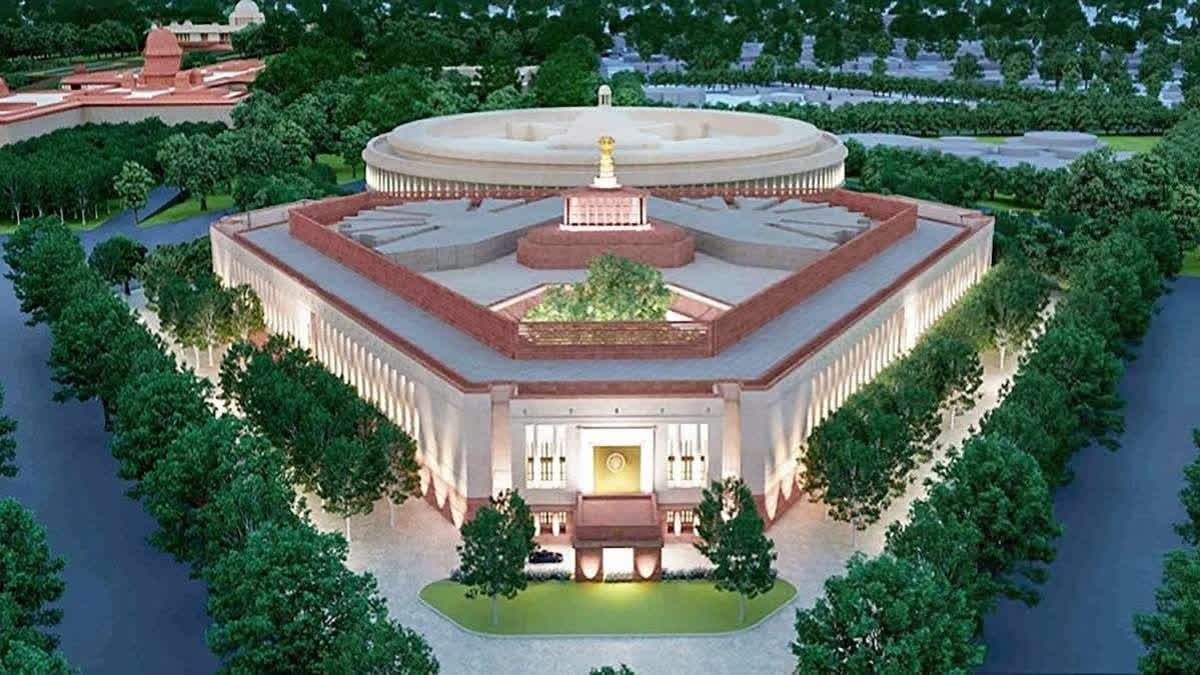New Delhi: The public discussion about the need for a new and bigger Parliament building and redevelopment of the Central Vista project refuses to die down, particularly over the way the new Parliament building was constructed amid a global pandemic, which killed more than 5,30,000 people in the country and 6.88 million people worldwide.
Prime Minister Narendra Modi’s favourite project, construction of a new Parliament building adjacent to the old heritage structure and redevelopment of Central Vista was not without legal battles fought by the best legal minds of the country in both the Delhi High Court and Supreme Court.
As soon as a public notice was issued by the DDA to change the land use under the Master Plan in December 2019, legal challenges were mounted to stall the project. It would be worthwhile to take a look at how the government’s top law officers impressed upon the apex court to allow the completion of this crucial project amid a global pandemic. As a result, not only Delhi High Court and Supreme Court refused to stay the work even during a devastating second Covid wave triggered by the deadly Delta variant of the Covid virus, but also imposed costs on the petitioners.
Need for larger working space
In its policy document submitted to the top court, the Centre said the need for the development of the project was rooted in the creation of a larger working space for the efficient functioning of the highest legislative wing of the country.
It also impressed on the need for an integrated administrative block for ministries and departments that have been spread out at different locations including on rental basis.
It said the Parliament House building, a Grade-I heritage structure, was commissioned in 1927 and stands as a 93 years old structure now. The structure has been subjected to various modifications in the post-independence period to maintain its functionality as per changing requirements.
Number of MPs set to go up post 2026 delimitation exercise
The Centre said a larger working space was needed as the number of Lok Sabha members was fixed at 545 after the 1971 census when the country’s population was only over 54 crore.. It said a fresh delimitation exercise would be taken in 2026 while the population has already crossed the mark of 130 crore people.
According to the Centre’s submissions, the present Central Hall has a seating capacity of only 440 persons. That already falls short of the present need to accommodate members of both Houses together during a joint session as there was no scope to expand the existing Central Hall. As a result, the Joint Sessions of both the Houses of Parliament are conducted by way of a makeshift arrangement in the Central Hall causing inconvenience to the members attending official functions, apart from undermining their dignity.
Old building not equipped to handle fire, water, and electricity hazards
Centre’s top law officers submitted that the old structure falls short of fire, water and electrical safety norms and poses a grave security risk for the legislators and secretariat staff. To address the concerns stated above, the Central government decided to construct a new Parliament building with a futuristic approach and the House of People being three times the size of the present Parliament building and Annexe attached therewith, would be referred to as the Parliament Complex.
All ministries are to be moved into 10 adjacent buildings
In addition to the construction of a new Parliament Complex, the Centre said that all the 51 ministries of the Central government will be housed in 10 buildings within an integrated complex marked with underground transit connectivity and structural identity. In the top court, the Centre submitted that even 70 years after independence, the Central government does not have an integrated Central Secretariat and the ministries and departments have been haphazardly located across the national capital, requiring the Central government to pay Rs 1,000 crore in rents per year.
Urgency due to G-20, 75 years of independence
Top law officers of the Centre pressed for the need for urgent completion of the project in the apex court saying that the new Parliament shall symbolise the 75th Independence Day of the country in 2022 as well as the Global G-20 Summit to be hosted by India in the same year.
In its written submissions, the Centre said a new Parliament building with space and technology to meet the present and emerging needs of vibrant Indian democracy was needed. Moreover, a Common Central Secretariat with all Ministries in a single location for efficiency and synergy in functioning was also the need of the hour, it said. It further said that Central Vista is to be redeveloped as a world-class public space and venue for national and international events.
The Centre also highlighted structural defects and lack of fire, water and electricity safety norms in the government buildings that have outlived their structural life after 40-50 years. It also underscored the acute shortage of office spaces in the offices of various Ministries presently spread across 47 buildings in the Central Vista region and in particular, the Central Secretariat block.
As a result, in January 2021, a three-judge bench of Justices AM Khanwilkar, Dinesh Maheshwari and Sanjiv Khanna, in a split verdict, upheld the Central government’s right to construct a new Parliament building adjacent to the old heritage building and redevelop Central Vista, which houses most of the Central government ministries and departments. Later, Delhi High Court and Supreme Court refused to interfere with the construction and redevelopment work and Delhi High Court imposed costs on the petitioners, who tried to stall the construction of a new Parliament building and redevelopment of the Central Vista area.



